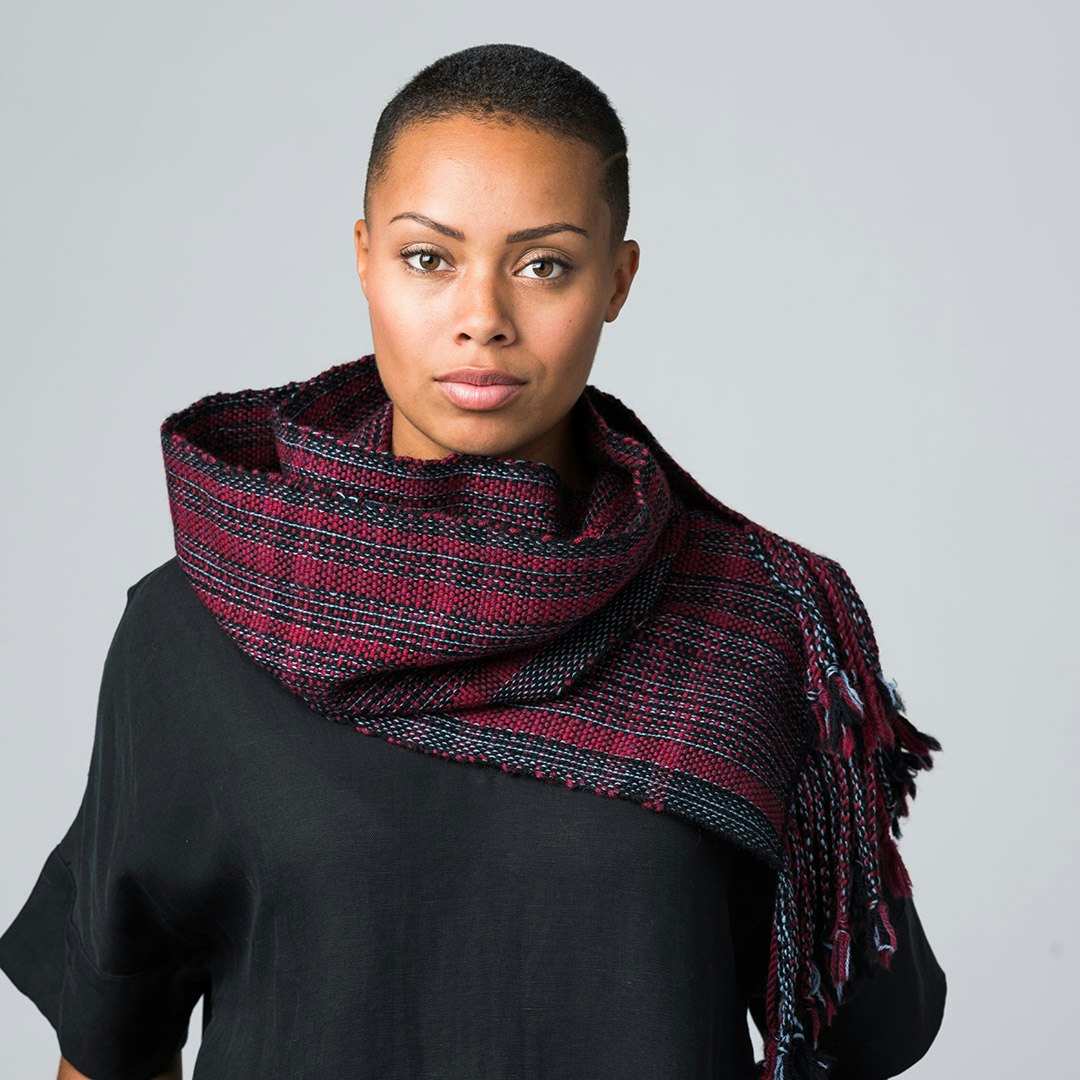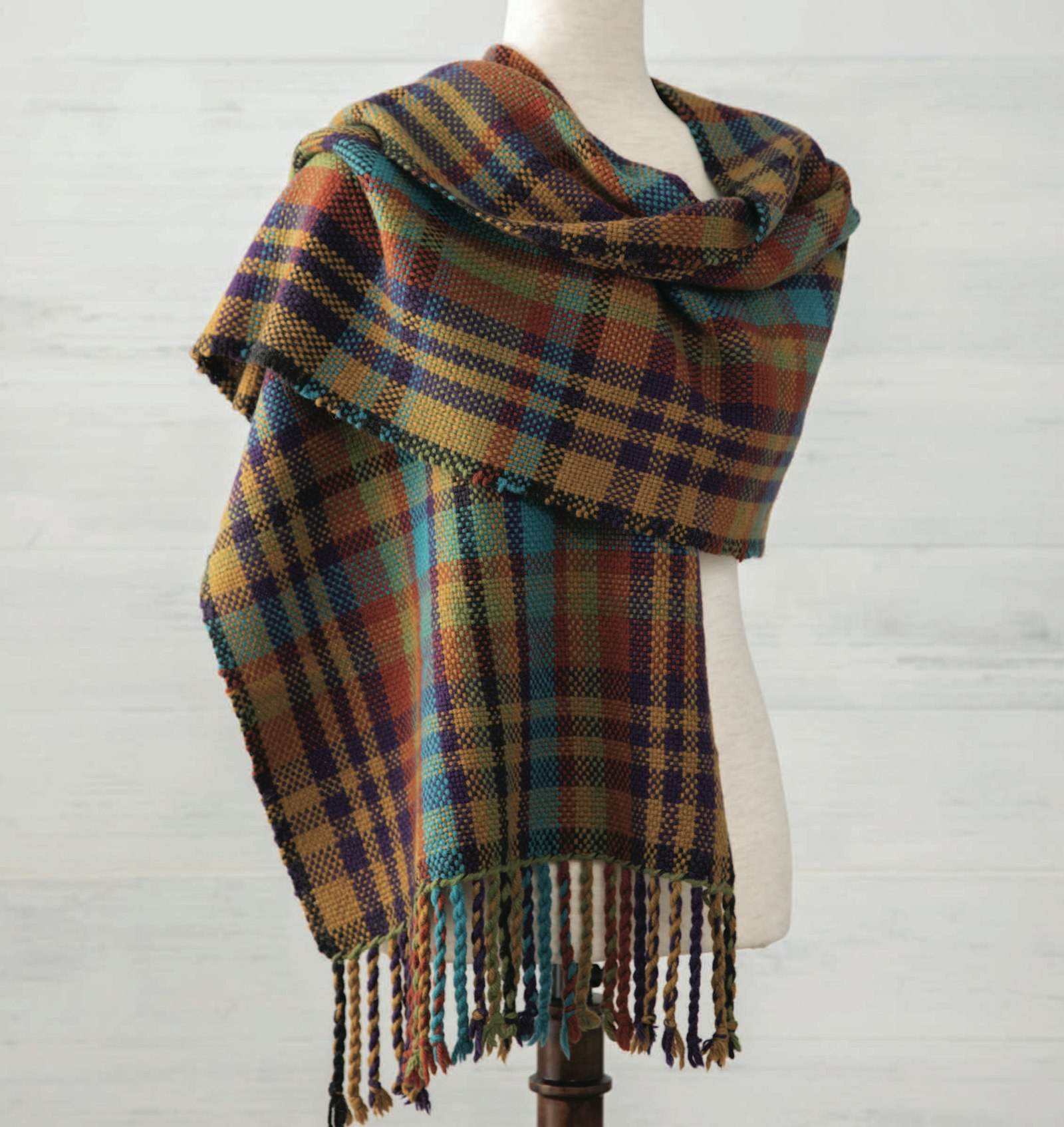Now that the winter is getting extra chilly, I’ve been grabbing my handwoven wool scarf more often than not. I love how soft and warm it is, especially on windy days when I use it to protect my face. Wool is one of my absolute favorite fibers to weave with and to wear.
It wasn’t always that way—back when I first started out, I didn’t know very much about wool as it related to weaving, and I made a few mistakes. Over the years I’ve learned a few tips for weaving with wool that have helped guide me, and I’d like to share them with you and, as a bonus just for subscribers, share a couple of the most popular wool projects from Easy Weaving with Little Looms. (Not a subscriber? Go here for more information.)
 Anu Bhatia’s Yarn to Love Scarf. Photo credit: Caleb Young (Good Folk Photography)
Anu Bhatia’s Yarn to Love Scarf. Photo credit: Caleb Young (Good Folk Photography)
5 Tips for Weaving with Wool
Not all wools are created equal. Rug yarns are designed to be hardwearing and durable so they won’t wear down and break after being stepped on day after day. They’re perfect for rugs, runners, and even placemats, but they’re probably not something you’d want to wear next to your skin as a scarf. If you’re weaving a wearable, make sure to pick a yarn that feels good to you. If you’re weaving a rug (or mug rugs), choose a yarn that’s strong and sturdy even if it’s scratchy.
Mix and match yarns with care. Rigid-heddle looms lend themselves well to weaving with mixed-yarn warps, especially when you’re using a variable-dent heddle. Problems can occur, though, if you don’t pay attention to fiber content of each yarn you mix into your warp. Even if you have an all wool warp, not all wools will full at the same rate, and some wools, such as superwash-treated wools, won’t shrink at all. Read all your yarn labels and choose yarns wisely; otherwise you might end up with unwanted differential shrinkage.
ADVERTISEMENTWeave with roving in moderation or in wall hangings. For some reason, I’ve been seeing loads of people using roving to make projects such as sweaters and blankets. While these items are pretty, they’re also all but unusable. Roving is unspun, so it’s not strong enough to hold up to much use or washing. Roving looks beautiful in weaving, but it’s best to use it in small amounts in pieces that don’t have to be washed regularly. Wall hangings, for example, are a great use of roving. A scarf you wear daily? Not so much.
Wool blooms, so sample for a perfect sett. When you wet-finish wool, the fibers fluff out and take up more space. This means that if you have a wool yarn and a cotton yarn that have the same number of wraps-per-inch, you’ll need to sett the wool yarn slightly looser than the cotton to account for the bloom. If you’re not sure exactly how to sett your loom, make sure to sample.
Wet-finish and wash with care, but don’t stress out too much. As I mentioned above, most wools will full and shrink to some extent, so any washing and wet-finishing needs to be done carefully. I prefer to use no-rinse wool washes such as Eucalan and Soak Wash. These products let you soak your items to clean them without agitation or rinsing. Both options work well, although if you’re worried about throwing wool in your washer, you can check it every few minutes the first time to see whether there’s any unwanted fulling.
Now that you have these tips for weaving with wool, you can put them to good use with one of these cozy projects, perfect for your next winter weaving project. Download them now by clicking the links below.
Yarn to Love Scarf by Anu Bhatia
Happy Weaving!
Christina

